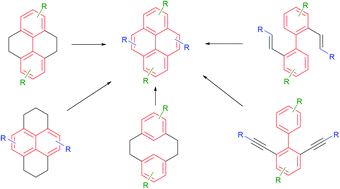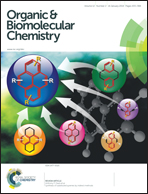Synthesis of substituted pyrenes by indirect methods
Abstract
The pyrene nucleus is a valuable component for materials, supramolecular and biological chemistry, due to its photophysical/electronic properties and extended rigid structure. However, its exploitation is hindered by the limited range of methods and outcomes for the direct substitution of pyrene itself. In response to this problem, a variety of indirect methods have been developed for preparing pyrenes with less usual substitution patterns. Herein we review these approaches, covering methods which involve reduced pyrenes, transannular ring closures and cyclisations of biphenyl intermediates. We also showcase the diverse range of substituted pyrenes which have been reported in the literature, and can serve as building blocks for new molecular architectures.


 Please wait while we load your content...
Please wait while we load your content...